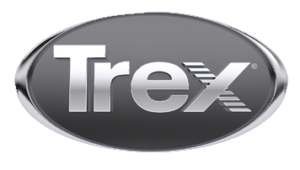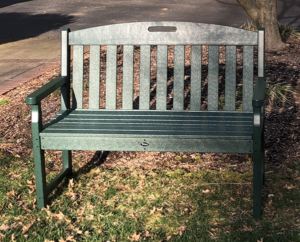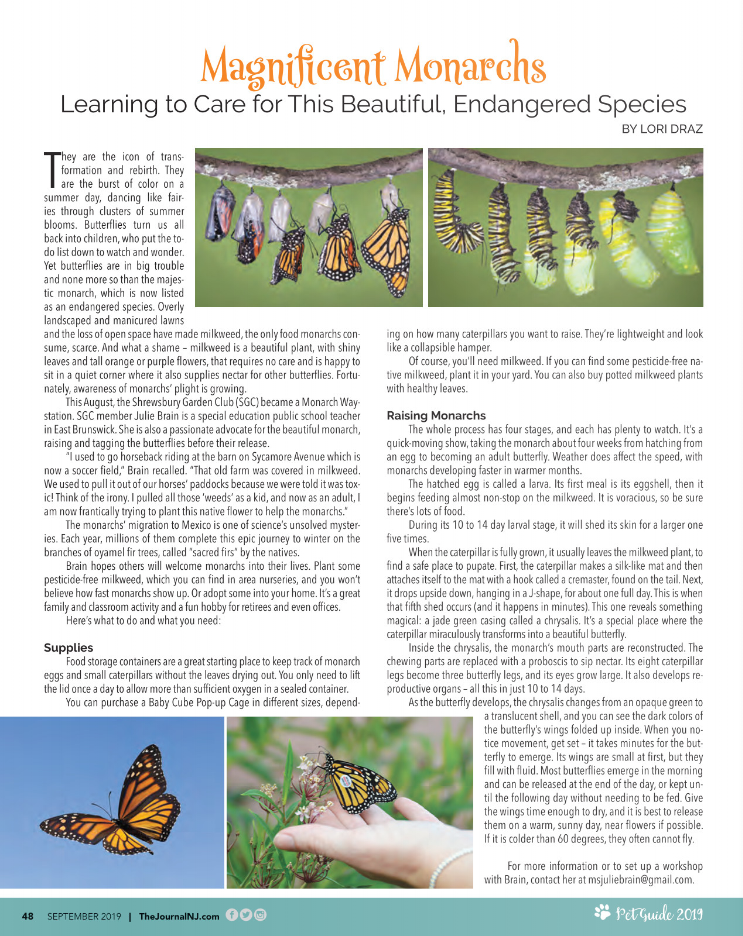
Red Bank United Methodist Church invites you to celebrate the 53rd anniversary of Earth Day on April 22 with activities going on in the area, and at our church! EARTH DAY began in 1970 because millions of Americans were concerned about how we were treating the air, our forests, rivers, lakes and the ocean, and the many species that share our space on Planet Earth. We are a Green Faith Certified Congregation, and we started our journey in 2009 by signing up for GF Certification process. Over 5 decades we have made great progress, through the Clean Water Act, and through the Environmental Protection Agency, and through many efforts to reduce pollution and litter and clean up the air we breathe by monitoring power plants. And here in New Jersey, our state has actually banned single stream plastic bags, which is a major accomplishment. Our church congregation has taken our pledge to be green seriously and members ride bikes to church, recycle, and use reusable dishes and flatware in all events. 600 pounds of single stream plastic bags were collected for our TREX challenge and we were presented with a TREX bench for our nursery playground. That was a big accomplishment and all joined in. Each Sunday Fellowship hour includes healthy snacks and organic fair trade coffee to help small farmers through Equal Exchange. Now we are training to prune invasive plants, and our pollinator garden attracts bees, butterflies and birds, and it is beautiful. We continue our efforts while facing the challenges of climate change and global warming. Where have we been and where will we go as good stewards of Planet Earth?
 Our Certification process began with audits of all facets of our faith community – from energy use, to property care, to what we eat and what utensils we use for meals in our church, to concerns about environmental justice, transportation of the many goods we buy the transition to clean energy from fossil fuels, and how we treat our fellow humans. All through the last 12 years we have been actively avoiding adding CO2 in the atmosphere by over 1, 079,441 pounds and our rooftop solar project has generated 631,717 Kilowatt hours of electricity. Congregation families have been encouraged to install home solar projects as well.
Our Certification process began with audits of all facets of our faith community – from energy use, to property care, to what we eat and what utensils we use for meals in our church, to concerns about environmental justice, transportation of the many goods we buy the transition to clean energy from fossil fuels, and how we treat our fellow humans. All through the last 12 years we have been actively avoiding adding CO2 in the atmosphere by over 1, 079,441 pounds and our rooftop solar project has generated 631,717 Kilowatt hours of electricity. Congregation families have been encouraged to install home solar projects as well. Our Green Lenten Calendar shares projects and prayers and actions you can take on the journey to Easter. Each of us can do small things and also work on some large things to help shrink our carbon footprints on the earth. And share your stories on favorite trees you care about in your yard or local park, or in Sequoia National Park. You can write poems, take photos, sing songs via video, and tell us about your favorite National Park or any special place of nature that you treasure.
Our Green Lenten Calendar shares projects and prayers and actions you can take on the journey to Easter. Each of us can do small things and also work on some large things to help shrink our carbon footprints on the earth. And share your stories on favorite trees you care about in your yard or local park, or in Sequoia National Park. You can write poems, take photos, sing songs via video, and tell us about your favorite National Park or any special place of nature that you treasure.CLICK HERE to see our Green Energy Success story! Please share some of your ways of living as good stewards – on Facebook group “Fellowship Hall” – Please ask questions which our Green Team will try to answer. You can write poems, take photos, sing songs via video, and tell us about your favorite National Park!! Thanks for participating!
– Online Green Event 2020
On November 18, 2012, UMC Red Bank received its certification as a Greenfaith congregation. The church is the first United Methodist Church to receive certification. Greenfaith is New Jersey’s interfaith coalition for the environment, founded in 1992, to inspire, educate, and mobilize people of diverse spiritual backgrounds to rediscover their relationship with the sacred in nature and to restore the earth for future generations through shared beliefs of the world’s great religions:
- Caring for the earth is a religious value; environmental stewardship is a moral responsibility
- We grow spiritually through our relationship with the earth
- Everyone has the right to live in a clean, safe environment
- People of faith have a vital role to play in restoring healthy ecosystems around the world.
Green Faith certification is designed to help houses of worship from diverse traditions become religious-environmental leaders. The Green Faith certification is the world’s first comprehensive interfaith, environmental certification program.
Over two years, participating institutions carry out a range of initiatives to integrate environmental themes into worship, religious education, facility maintenance, and social outreach with the goal of becoming a Green Faith sanctuary.
 The UMW Garden mission is to grow a variety of vegetables to help serve the needs of Lunch Break for fresh produce and to share half of the bounty with our congregation. Each year we have exceeded the previous year in the poundage harvested. Last year we totaled 447 pounds of produce.
The UMW Garden mission is to grow a variety of vegetables to help serve the needs of Lunch Break for fresh produce and to share half of the bounty with our congregation. Each year we have exceeded the previous year in the poundage harvested. Last year we totaled 447 pounds of produce.Click Here to read more about the UMW Garden
 CLICK HERE to Learn how a plant-based diet helps the planet!
CLICK HERE to Learn how a plant-based diet helps the planet!
Our TREX® Challenge was a great success! We collected over 500 pounds of single stream plastics! We were rewarded for all these efforts with this beautiful TREX® park bench!
CLICK HERE to read more about this challenge!



Red Bank UMC Operates on Green Faith: New roof, additional insulation and 205 solar panels power church
By Kristen Dalton
The Hub
By Kristen Dalton
The Hub
March 15, 2012
The United Methodist Church of Red Bank installed 205 solar panels as part of its Green Faith initiative and officially began operating on green energy on Nov. 30, 2010. They’re calling it green faith. After more than one year of operating on 205 panels of solar power, the United Methodist Church of Red Bank produced a self-sustaining 57,000 kilowatt hours of energy.

 KEN GLOSSBRENNER’S speech to the congregation about CITIZENS CLIMATE LOBBY for Earth Day 2022
KEN GLOSSBRENNER’S speech to the congregation about CITIZENS CLIMATE LOBBY for Earth Day 2022Thank you for allowing me to speak. Let the words of my mouth, and the meditation of our hearts, be acceptable in thy sight, O LORD, our strength, and our redeemer.
Earth Day was Friday. Today is Earth Sunday. And I trust we will celebrate our blessed home year-round. By God’s grace, each of us, for a moment, shares in Earth’s beauty and abundance.
God gave us eyes to see, and ears to hear, and minds to reason. And with Jesus as our savior and teacher, we have learned how to live our best lives, with love and compassion. With all of these gifts humanity has gone far in making this Earth into a truly comfortable home for many of us.
With careful observation, reason, and science we have increased and improved the quality of our lives. The Age of Reason led to democracies replacing autocracies, and with that leap forward in governance we have improved how we care for the whole, not just the privileged few.
We can succeed. Our highways had litter. We passed laws and the litter got better. Our skies were filled with smog and acid rain. Regulation has helped reduce both. Thanks to phasing out certain chemicals, the ozone hole is now completely closed, and its threat has been mitigated. We are now in a world where our God-given powers of observation, a.k.a. our science, can detect threats and their causes. And now we have organizations and systems that allow us to respond collectively.
Today the single biggest threat to our Earth, its people, and its beauty is global warming. There are better sources than I for the entire case, but I will summarize by saying there are millions of data points showing our atmosphere and oceans warming more rapidly than ever before, and more rapidly than our ecosystems can adapt. This can’t be good. The cause has been understood since Eunice Foote’s 1856 experiments. Carbon dioxide traps heat. And burning carbon puts CO2 into the air.
I am a member of Citizens Climate Lobby. As the name suggests, we are a citizens group, self-motivated, and self-funded. We “lobby”, meaning we participate actively in our democracy by exerting our citizen influence with all decision makers, regardless of political affiliation. Our goal is mitigating and capping human-caused climate change. We believe in our cause. We believe in our democracy, and so we believe in our collective ability to solve our problems.
CCL does not have a big government agenda. We have an Earth agenda. We have a people agenda. Our current, steady position is that we need to TAX carbon as it comes out of the ground. By the ton. It’s just that simple. Not regulation. Not regulatory agencies. No bureaucrats deciding which solution is “greener”. A simple carbon tax simply incents our great innovators and capitalists to find the best less-carbon-intense alternatives. For example, if putting up a windmill or mining lithium for batteries turns out to use a lot of carbon, this same increase in the cost of carbon will make them more expensive, pushing the market toward fewer windmills and less lithium.
Increased prices for consumer goods, most noticeably gasoline, natural gas, and fuel oil, will force greener decisions at home. For example, insulation and more fuel-efficient cars will become more attractive.
True, those are expensive changes and take time and effort. And meanwhile, our current purchases would be more expensive with a carbon tax. CCL’s solution is clear. All of the revenues from the carbon tax go directly to consumers. These become significant tax reductions or significant checks delivered regularly to our homes. Since the carbon tax revenues are distributed equally among people (not based on income or wealth), a majority of Americans will actually receive more in their checks than the extra they will be paying for their carbon-based goods. So the CCL proposal is income-positive for those of us on the low end of the economic scale, even before we get around to making energy changes in our lives.
The key is, carbon-intense products will become more expensive and people will have more money. So lower-carbon solutions and conservation solutions will gain market share. May the best low-carbon solutions win. Multiple economic studies have shown, that as simple as this “carbon fee and dividend” solution is, it is the best (and maybe the only) way to get us to carbon-neutral. Just like we closed the ozone hole, and beautified our highways, we will save this Earth. Speak with me after church about joining our efforts.
Earth Day was Friday. Today is Earth Sunday. And I trust we will celebrate our blessed home year-round. By God’s grace, each of us, for a moment, shares in Earth’s beauty and abundance.
God gave us eyes to see, and ears to hear, and minds to reason. And with Jesus as our savior and teacher, we have learned how to live our best lives, with love and compassion. With all of these gifts humanity has gone far in making this Earth into a truly comfortable home for many of us.
With careful observation, reason, and science we have increased and improved the quality of our lives. The Age of Reason led to democracies replacing autocracies, and with that leap forward in governance we have improved how we care for the whole, not just the privileged few.
We can succeed. Our highways had litter. We passed laws and the litter got better. Our skies were filled with smog and acid rain. Regulation has helped reduce both. Thanks to phasing out certain chemicals, the ozone hole is now completely closed, and its threat has been mitigated. We are now in a world where our God-given powers of observation, a.k.a. our science, can detect threats and their causes. And now we have organizations and systems that allow us to respond collectively.
Today the single biggest threat to our Earth, its people, and its beauty is global warming. There are better sources than I for the entire case, but I will summarize by saying there are millions of data points showing our atmosphere and oceans warming more rapidly than ever before, and more rapidly than our ecosystems can adapt. This can’t be good. The cause has been understood since Eunice Foote’s 1856 experiments. Carbon dioxide traps heat. And burning carbon puts CO2 into the air.
I am a member of Citizens Climate Lobby. As the name suggests, we are a citizens group, self-motivated, and self-funded. We “lobby”, meaning we participate actively in our democracy by exerting our citizen influence with all decision makers, regardless of political affiliation. Our goal is mitigating and capping human-caused climate change. We believe in our cause. We believe in our democracy, and so we believe in our collective ability to solve our problems.
CCL does not have a big government agenda. We have an Earth agenda. We have a people agenda. Our current, steady position is that we need to TAX carbon as it comes out of the ground. By the ton. It’s just that simple. Not regulation. Not regulatory agencies. No bureaucrats deciding which solution is “greener”. A simple carbon tax simply incents our great innovators and capitalists to find the best less-carbon-intense alternatives. For example, if putting up a windmill or mining lithium for batteries turns out to use a lot of carbon, this same increase in the cost of carbon will make them more expensive, pushing the market toward fewer windmills and less lithium.
Increased prices for consumer goods, most noticeably gasoline, natural gas, and fuel oil, will force greener decisions at home. For example, insulation and more fuel-efficient cars will become more attractive.
True, those are expensive changes and take time and effort. And meanwhile, our current purchases would be more expensive with a carbon tax. CCL’s solution is clear. All of the revenues from the carbon tax go directly to consumers. These become significant tax reductions or significant checks delivered regularly to our homes. Since the carbon tax revenues are distributed equally among people (not based on income or wealth), a majority of Americans will actually receive more in their checks than the extra they will be paying for their carbon-based goods. So the CCL proposal is income-positive for those of us on the low end of the economic scale, even before we get around to making energy changes in our lives.
The key is, carbon-intense products will become more expensive and people will have more money. So lower-carbon solutions and conservation solutions will gain market share. May the best low-carbon solutions win. Multiple economic studies have shown, that as simple as this “carbon fee and dividend” solution is, it is the best (and maybe the only) way to get us to carbon-neutral. Just like we closed the ozone hole, and beautified our highways, we will save this Earth. Speak with me after church about joining our efforts.
I’m about to play a piece by Benjamin Brittan. It’s music for mythology. But maybe it’s appropriate for me to tell you the short form of the story. The title character, Niobe had hubris. Because of her great progeny (her 14 sons and daughters) she considered herself equal to or greater than the gods. In punishment for that hubris she died in grief, turning into a weeping mountain…
Humanity can claim dominion over this Earth, but if we have hubris in how we manage this gift, we will return to this Earth in tears. I don’t want that for any of us.
Ken
For more information: contact Ken Glossbrenner at Ken@glossbrenner.us & google cclcommunity@citizensclimate.org

MONARCHS AND MILKWEED A SUSTAINABLE CONNECTION!
Why do Monarch butterflies need Milkweed? Well, over many centuries of evolving into the beautiful orange and black Monarchs who flit from flower to flower in your summer gardens, these wondrous creatures, only a few ounces in weight, hatch out of their cocoons which have to be laid on the leaves of native milkweed, which the catepillars feed on until they hatch one day and fly away. One generation of these awesome pollinators actually migrates south about 4000 kilometers to Mexico to the mountains of oyamel fir trees in the state of Michoacan. About 12 years ago I went with my grandson Jack (22) and my sister and her grandson, Zach, (23) to Mexico to see hundreds of thousands of Monarchs wintering over up at 10,000 feet, in very chilly mountain air, huddled together with their wings turned in, so all the trees
looked gray. You can google University of Florida Natural History Museum Monarch project, or Monarch migration to Mexico, to find out more and to see photos of this event that occurs annually in the same place. It is a mystery how these creatures find their way, and then the next generation is hatched on the
northward migration in the spring. But climate issues, poaching of fir trees, extreme weather, and the lack of milkweed along their migration paths due to mega farming and destruction of natural hedgerows in huge farms, has led to a 90% drop in the Monarch population in North and Central America. But the memory of that trip is forever in my mind and we are helping Live Monarch Foundation in educating and spreading seeds.
looked gray. You can google University of Florida Natural History Museum Monarch project, or Monarch migration to Mexico, to find out more and to see photos of this event that occurs annually in the same place. It is a mystery how these creatures find their way, and then the next generation is hatched on the
northward migration in the spring. But climate issues, poaching of fir trees, extreme weather, and the lack of milkweed along their migration paths due to mega farming and destruction of natural hedgerows in huge farms, has led to a 90% drop in the Monarch population in North and Central America. But the memory of that trip is forever in my mind and we are helping Live Monarch Foundation in educating and spreading seeds.
Every year at our Green Fair, we have milkweed seeds to give away, and I hope some of yours have sprouted in past years, but they are not easy to germinate. This year I followed directions and chilled seeds in my refrigerator for 30 days in wet paper towels, to get them started. The McCann boys came over one day several weeks ago and potted them up into 30 pots with hopes that they would sprout after a few weeks of watering. Well, now, into the second week of mostly rain and temperatures in the 40’s, none have sprouted, but wait until May, and come get your pot at church when we can gather again, or get a packet of seeds and instructions to take home and do it your own way.
Several articles on Monarchs and on pollinators are below. One from Sept. 2019 writes that the Shrewsbury Garden Club is a Monarch Way station, and a member, Julie Brain, is very involved in raising Monarchs as well. You can contact her at msjuliebrain@gmail.com
Read MAGNIFICENT MONARCHS, BY Lori Draz And NATIVE PLANTINGS AND POLLINATORS courtesy of the Pollinator Partnership/North American Pollinator Protection Campaign.pollinator.org and advice from the Native Plant Society of NJ.
We also include an Index of Trees that make wonderful hosts for pollinating insects, if you are working on making your yard friendly to Pollinators. We cannot live without them.
Janie Schildge –contact me for milkweed seeds

Native Plantings & Pollinators
“A garden is only as rich and beautiful as the integral health of the system; pollinators are
essential to the system – make your home their home.”
Derry MacBride, Nat. Affairs & Legislative Chairwoman, Garden Club of America Gardeners have a wide array of plants to use in their gardens. Native plants, plants introduced from years of plant exploration from around the world, and plants developed by professional and amateur breeders can be found in garden centers, in catalogs, and on web-sites. Use your knowledge of pollinator needs to guide your choices. CLICK HERE for complete article.